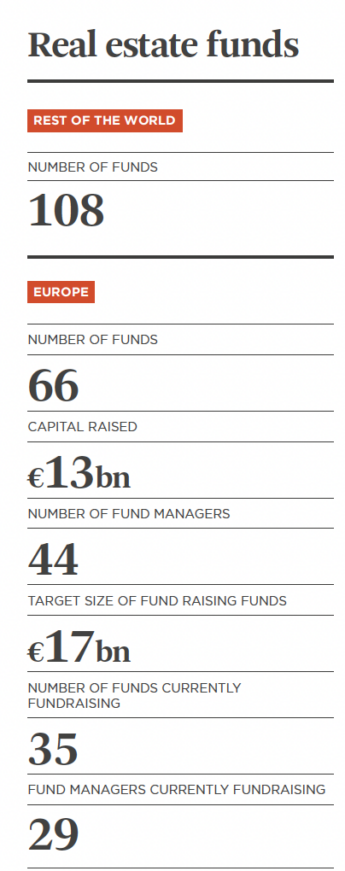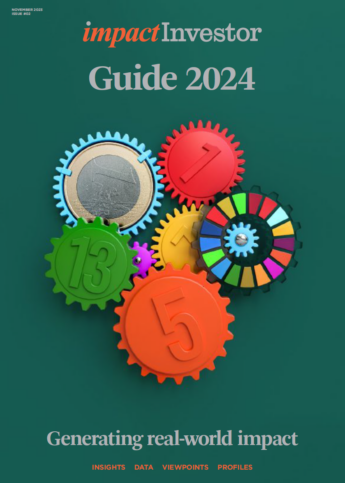From our Guide 2024: Impact considerations are on the rise among real estate investors who want to see both social and environmental goals as the cornerstone of investment strategies.

Originally, only funds investing in very specific sectors such as affordable housing were considered real estate impact funds, but this is fast changing.

Over the last decade, Bridges Fund Management has raised five specialist sustainable real estate investment funds, the most recent of which closed at its hard cap of £350m (€427m) in 2022. Partner Henry Pepper says: “Recently, big European and North American investors have become increasingly sophisticated in their approach to sustainability and impact”.
For John Levy, director of impact at Franklin Real Asset Advisors, investors fall into three categories. “Firstly, those for whom financial and de-risking characteristics are most important and for whom impact is therefore a secondary factor. Secondly, the investors who have made a decision to move in the direction of impact investment and wish to prove it. And finally, the third group of deeply focused impact investors. We welcome all three of these categories of investor because they enable us to scale our strategy.”
Kelly Russell Catella, head of sustainability, at Italian real estate giant COIMA, tells us: “We are finding that a wide range of institutional investors are interested in impact in the real estate space and that interest is only growing.” The COIMA ESG City Impact Fund (CECIF) has raised over €500m from a range of major Italian institutional investors — including the ENPAM Foundation, Cassa Forense, Cassa Dottori Accountisti, and Inarcassa.
This increase in investor interest is driven by the growing focus on climate change and a broader recognition of the social impact real estate has. As Pepper says: “There’s an increasingly sophisticated understanding of the importance of real estate investment, not only in terms of the transition to net zero but also in supporting healthier lifestyles and stronger communities.”
Focus on social impact
The draft EU Social Taxonomy provides initial ideas on potential social impacts. Decent work, adequate living standards, the wellbeing of the end-users, and inclusive and sustainable communities are all identified as important objectives.
“Social impact has a crucial role in the real estate sector,” according to Charlotte Jacques, head of sustainability, real estate at Schroders Capital. “The built environment is fundamental to society.” She believes the greater focus on social impact in real estate is driven by increasing regulation, growing investor expectations, and engagement with building occupiers and local communities.

Levy comments: “Social impact is very much central to how we approach real estate investments. We focus on creating material positive impact through our investments and our active ownership across our portfolio of assets in the healthcare, social housing, justice and emergency, and civic sectors.”
More recently, this broadening out has been driven by a focus on the UN Sustainable Development Goals (SDGs) which Levy says are central to their thinking. His funds contribute to seven of the SDGs, which target specific social or environmental outcomes.
Into the mainstream
Impact is no longer a sub-class of real estate, but it is now central to many mainstream funds. Buildings are responsible for more than a third of all carbon emissions, so as Pepper observes “real estate investment is a critical part of the path to decarbonisation. What’s more, around 80% of the buildings in existence today will still be here in 2050 — so we’re likely to see a much greater focus on retrofitting rather than rebuilding to achieve our climate goals”.
As Jacques puts it: “People have come to the greater realisation that the road to net zero presents many opportunities as opposed to only risks and that buildings which are not suitably sustainable are being negatively impacted on value. CRREM analysis and stranding year are growing in prevalence.”
This fear of stranded assets is a powerful driver. Kai Bender, managing director at ACRON, observes: “Our investors will not acquire properties that do not meet up to date ESG standards. That would just be stranded assets waiting to happen. There is no alternative to such an approach today.”
According to Bender, this is also “being compounded by other market trends. Working from home reduces the overall demand for office space, enabling tenants to be much more selective. This new market dynamic, in turn, weakens the positions of properties with low ESG scores even more. As the overall market environment gets more challenging, the pressure on ESG performance (as well as other key benchmarks) keeps growing”.
Regulatory environment
The EU’s Energy Performance of Buildings Directive provides further guidance on sustainable buildings, in particular on the energy efficiency of new and existing buildings going forward.
But regulatory change is the most powerful driver. “The European Green Deal, with its overarching goal of making the EU climate neutral by 2050, sets the baseline for investors,” according to Andreas Wuermeling, programme head, ESG at pbb Deutsche Pfandbriefbank.
It has been followed by the EU Taxonomy, which provides a classification system for sustainable economic activities; the Pillar 3 disclosures of the Basel Framework, which consist of disclosures on physical and transitory climate risks; the European Central Bank (ECB) guide on climate-related and environmental risks; and finally the Corporate Sustainability Reporting Directive (CSRD).

As Russell Catella sums up: “Europe is very much in the lead when it comes to regulations” but “it is very important that regulators keep pushing on this front. There can be no backsliding, as we have sadly seen in the UK, for example.” UK prime minister Rishi Sunak recently did a major U-turn regarding green regulations on housing.
Levy also warns: “There is an issue around these regulations because they were not specifically designed for real estate. We look forward to more specific regulatory guidance that supports not only new construction of efficient buildings, but also the improvement and transformation of existing buildings which is critical to the fight against climate change.”
According to Jacques, the current approach “is counterintuitive given the current conditions of building stock, the need for decarbonisation and wider sustainability improvements, and the disproportionate contribution (both positive and negative) RE has when it comes to ‘E’ and ‘S’ outcomes. RE punches above its financial weight”.
Possible solutions are being considered. The Urban Land Institute’s C Change project and its Transition Risk Guidelines have played a big role when it comes to transacting transparency. For standards, the Better Buildings Partnership (BBP) and others have been working on the Net Zero Building standard.
Jacques adds: “There is a need for building passports to give all parties understanding of how a building is performing whether they are an occupier, a regulator, or an investor. This needs to be an actively managed tool used by all those working to evolve the physical building through its life to deliver planet conscious energy and carbon efficient space.”
The future
Going forward, impact investing is well-placed to dominate the real estate sector, with new considerations starting to bite.
“The industry has to tackle embodied carbon of refurbishments and developments and needs to appraise the carbon, materials, cost and time efficiency of improving existing and delivering new buildings,” Jacques thinks.
At the beginning of 2023, Bender acquired Luxembourg’s biggest timber building. “Such landmark buildings are able to attract the best tenants and therefore represent very safe and highly attractive investments.”
“Another key issue looking forward is biodiversity,” according to Russell Catella. This means “developers need to make sure they include enhancing biodiversity in their planning objectives”.
Levy adds: “It often takes creative solutions to create mission alignment, particularly when many costs are borne by landlords and benefits lie with tenants. Governments and lenders can catalyse more solutions by lowering the costs of environmental improvements through grants, tax breaks or lower cost debt financing.” But, as he concludes: “One thing is clear for the future. We are seeing our clients become more and more mission driven and that is a very good thing.”

This article is part of the editorial content of the Impact Investor Guide 2024. You can download a digital copy of the guide here.





